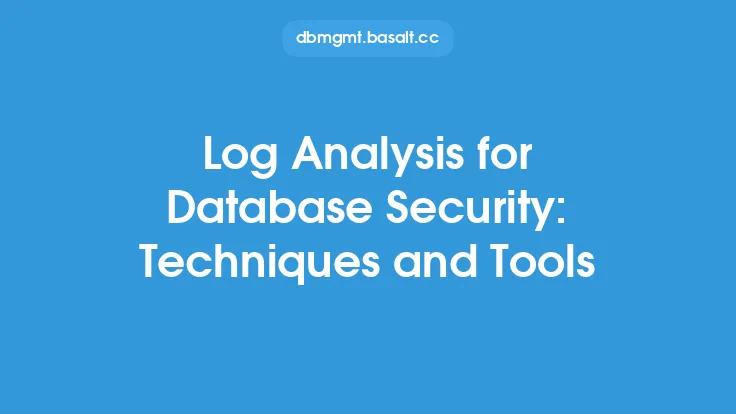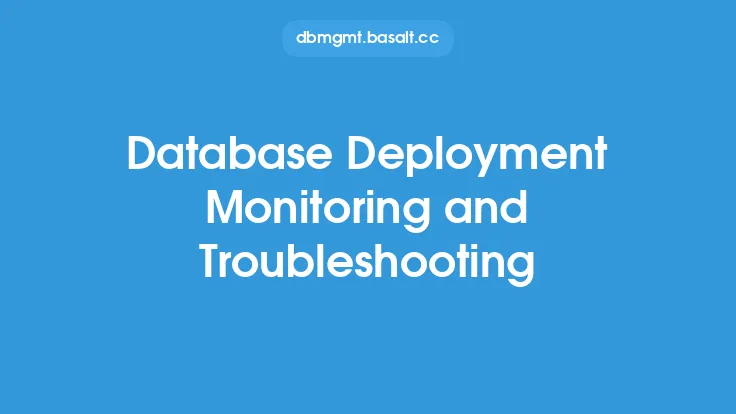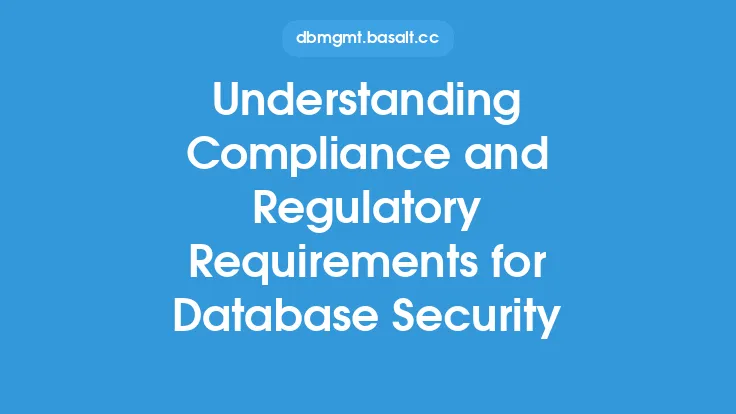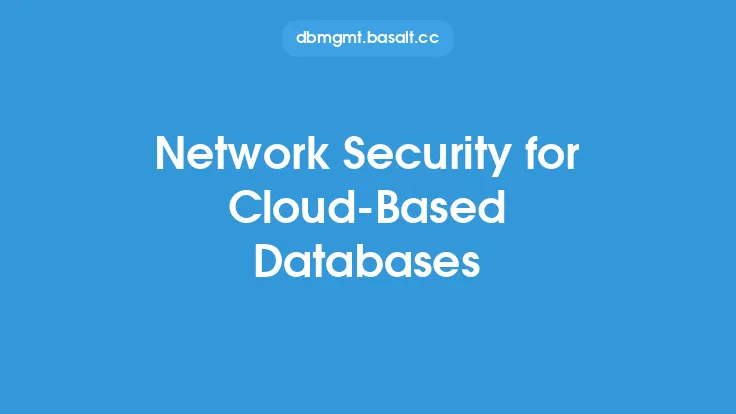Database security is a critical aspect of protecting sensitive data, and network security monitoring and incident response play a vital role in this process. As databases are often the target of cyber attacks, it is essential to have a robust monitoring and incident response system in place to detect and respond to security incidents in a timely and effective manner.
Introduction to Database Network Security Monitoring
Database network security monitoring involves the continuous monitoring of database networks to detect and identify potential security threats. This includes monitoring network traffic, system logs, and database activity to identify suspicious behavior, such as unauthorized access, data breaches, or other malicious activity. The goal of database network security monitoring is to detect security incidents in real-time, allowing for swift action to be taken to prevent or minimize damage.
Importance of Incident Response in Database Security
Incident response is a critical component of database security, as it enables organizations to respond quickly and effectively to security incidents. Incident response involves a structured approach to responding to security incidents, including identifying the incident, containing the damage, eradicating the threat, recovering from the incident, and post-incident activities. A well-planned incident response plan helps to minimize the impact of a security incident, reduce downtime, and prevent data breaches.
Key Components of Database Network Security Monitoring
Effective database network security monitoring involves several key components, including:
- Network traffic monitoring: This involves monitoring network traffic to and from the database to detect suspicious activity, such as unauthorized access or data breaches.
- System log monitoring: This involves monitoring system logs to detect security-related events, such as login attempts, changes to database configurations, or other suspicious activity.
- Database activity monitoring: This involves monitoring database activity, such as queries, transactions, and other database operations, to detect suspicious behavior.
- Anomaly detection: This involves using machine learning and other advanced technologies to detect unusual patterns of behavior that may indicate a security threat.
Tools and Technologies for Database Network Security Monitoring
Several tools and technologies are available to support database network security monitoring, including:
- Security information and event management (SIEM) systems: These systems provide real-time monitoring and analysis of security-related data from various sources, including network traffic, system logs, and database activity.
- Intrusion detection systems (IDS): These systems monitor network traffic to detect suspicious activity, such as unauthorized access or malware.
- Database activity monitoring tools: These tools monitor database activity, such as queries, transactions, and other database operations, to detect suspicious behavior.
- Anomaly detection tools: These tools use machine learning and other advanced technologies to detect unusual patterns of behavior that may indicate a security threat.
Best Practices for Database Network Security Monitoring and Incident Response
Several best practices can help organizations implement effective database network security monitoring and incident response, including:
- Develop a comprehensive incident response plan: This plan should include procedures for identifying, containing, eradicating, recovering from, and post-incident activities.
- Implement continuous monitoring: This involves continuously monitoring database networks to detect and identify potential security threats.
- Use automation: Automation can help streamline incident response processes, reducing the time and effort required to respond to security incidents.
- Provide training: Provide training to personnel on database network security monitoring and incident response procedures to ensure they are equipped to respond to security incidents effectively.
Challenges and Limitations of Database Network Security Monitoring and Incident Response
Several challenges and limitations can impact the effectiveness of database network security monitoring and incident response, including:
- Complexity: Database networks can be complex, making it challenging to monitor and respond to security incidents.
- Volume of data: The volume of data generated by database networks can be overwhelming, making it challenging to detect and respond to security incidents.
- Limited resources: Organizations may have limited resources, including personnel, budget, and technology, which can impact their ability to implement effective database network security monitoring and incident response.
- Evolving threats: Cyber threats are constantly evolving, making it challenging for organizations to stay ahead of emerging threats.
Future of Database Network Security Monitoring and Incident Response
The future of database network security monitoring and incident response will be shaped by several trends, including:
- Increased use of artificial intelligence and machine learning: These technologies will play a critical role in detecting and responding to security incidents, including anomaly detection and predictive analytics.
- Greater emphasis on cloud security: As more organizations move to the cloud, there will be a greater emphasis on cloud security, including cloud-based database security monitoring and incident response.
- Increased focus on incident response: Incident response will become increasingly important, as organizations recognize the need to respond quickly and effectively to security incidents.
- Greater use of automation: Automation will play a critical role in streamlining incident response processes, reducing the time and effort required to respond to security incidents.





